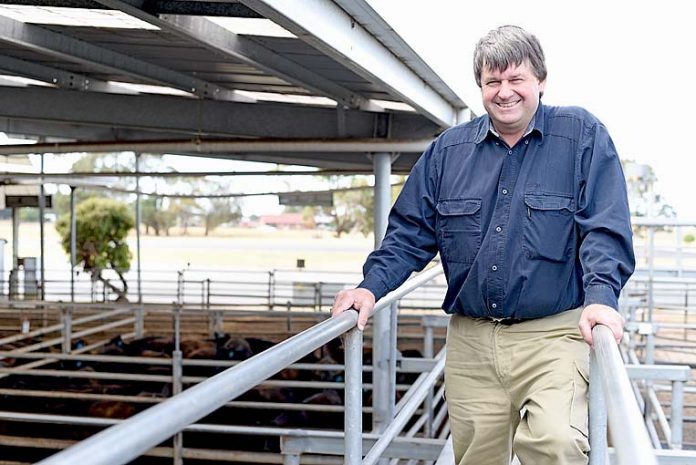

GRANT District Council has tweaked its projected cattle numbers for the Glenburnie Saleyards in 2018/19 to ensure the livestock exchange remains financially on track.
This follows Cr Alan Hill questioning whether the 80,000 head of cattle predicted was achievable.
Council released its draft 2018/19 budget at its full meeting on Monday night, which included a detailed budget for the Glenburnie Saleyards.
After discussions at the meeting, councillors voted to trim the projected cattle numbers to 70,000 head for next financial year.
Council has foreshadowed 150,000 head of sheep will be yarded at the facility in this period.
Cr Hill – who has been outspoken over the saleyards’ financial position – said he held concerns the council had budgeted for 80,000 head of cattle.
“I do not know how we can possibly pass a budget relating to the saleyards if we know or believe those figures are not achievable,” he said.
“We will never ever be in a position to finance the saleyards properly unless we know exactly what its position is. Budgeting is a major part of that.”
Cr Hill argued it was unlikely the saleyards could achieve approximately a 20pc jump in cattle numbers next financial year to achieve the projected 80,000.
He argued it was not good enough to take a “could happen approach”.
“We need to have a realistic budget … the figures we are going to present to the public in a draft need to have figures we feel are achievable,” the elected member said.
Interjecting, Cr Graham Slarks suggested the projected figure be trimmed to 70,000 cattle.
“If it is budgeted at 70,000 head and if it is more, then the saleyards makes money, if it’s less then the deficit is not as great,” Cr Slarks argued.
Responding, Mayor Richard Sage said the figures tabled at the meeting showed the saleyards were operating in a “cash surplus”.
“It is the depreciation where you run into strife,” Mr Sage said.
He said the saleyards was funnelling money into maintenance this year from its cash flow budget, which was actual money – not loan borrowings.
“So we still have loan borrowings to deal with and they are managing to pay them off, but they also putting in around $300,000 for improvements out there,” Mr Sage revealed.
“Admittedly, it is a numbers game … we need to look outside the square and getting internet out there for internet sales and that is looking forward.”
In comparison, he said the Millicent Saleyards recorded “much less” cattle than Glenburnie and Wattle Range Council was pouring in around $100,000 per year to keep it operational.
He said the neighbouring council was leaving the decision about its future to the newly elected council in November.
“There are opportunities for our saleyards and cattle agents are now telling us we have stock coming over from Hamilton district because of the new saleyards in Western Victoria and the fact their fees are a lot higher than ours.
“There are opportunities, but we need to grab them by the scruff of the neck to get it to happen.”
Council’s draft budget has been released for community consultation.







